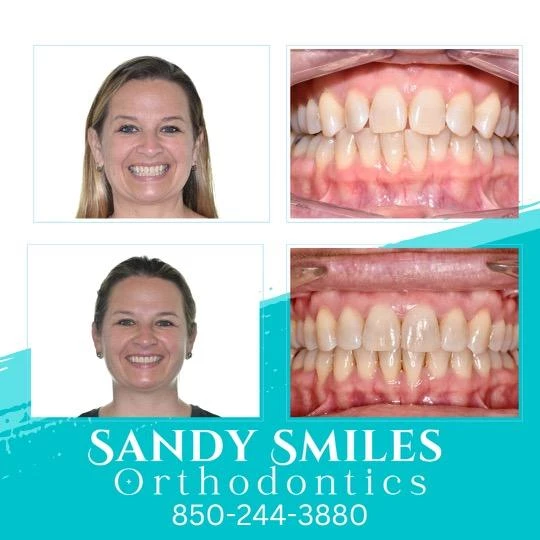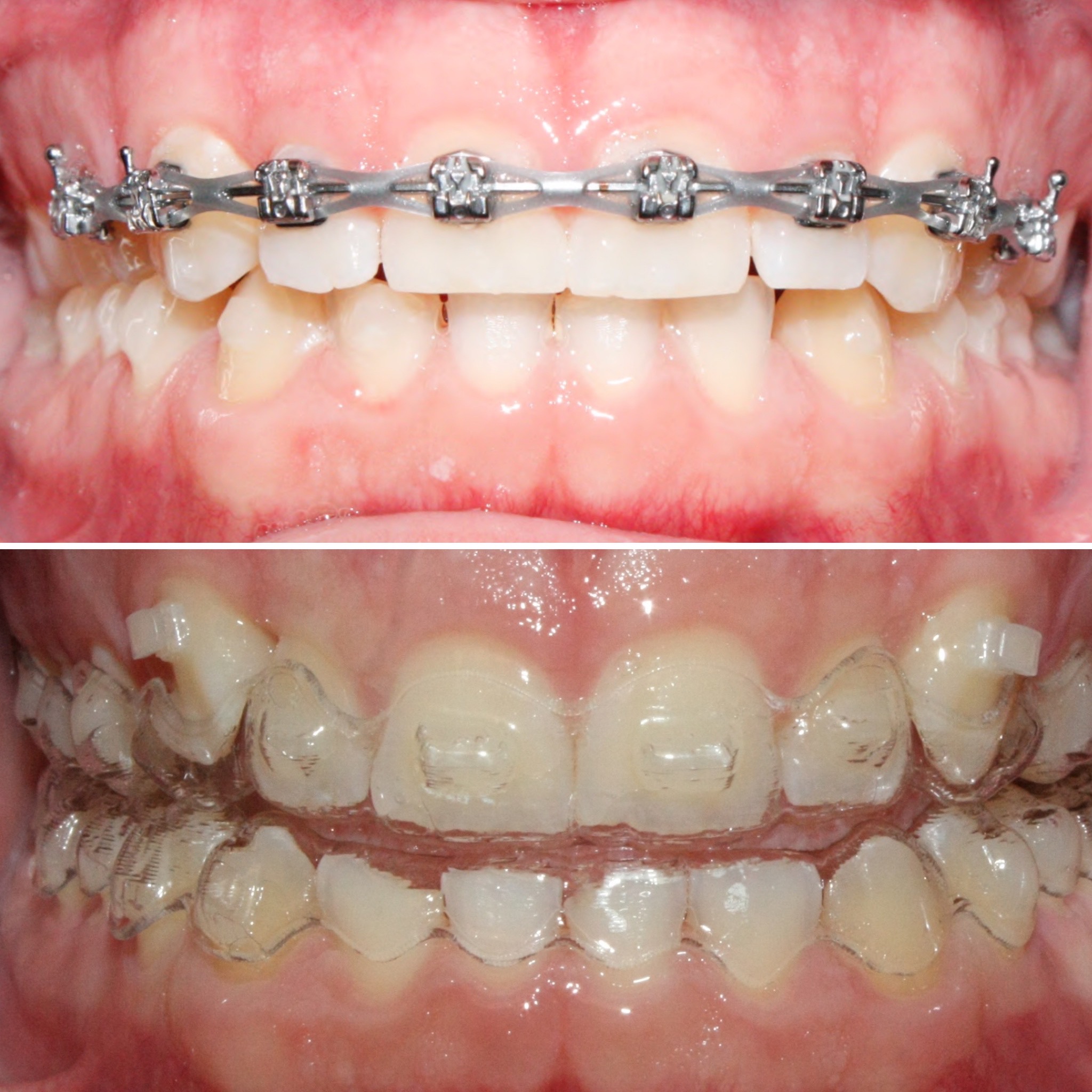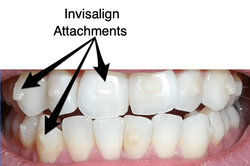Invisalign vs. Traditional Braces: Which Choice Is Right for You?
When thinking about orthodontic therapy, the option in between Invisalign and typical dental braces presents a number of crucial variables that warrant cautious evaluation. Invisalign uses a very discreet choice with detachable aligners, while traditional braces offer a more visible yet effective service for extreme imbalance. Each alternative incorporates distinctive advantages and downsides associated with aesthetic appeals, convenience, treatment duration, and expense. Comprehending these nuances is important for making a notified decision that aligns with your individual choices and way of living. The concern stays: which choice will best meet your orthodontic demands and expectations?
Introduction of Treatment Options

On the other hand, traditional braces contain steel brackets and cables that are adhered to the teeth. This technique uses continual pressure gradually to attain alignment. While reliable for complicated orthodontic problems, typical braces require routine check outs for changes and can posture obstacles in preserving oral health because of the difficulty of cleansing about cables and brackets.
Both alternatives have their qualities, and the choice frequently hinges on certain oral problems, way of living choices, and patient compliance. Ultimately, seeking advice from an orthodontic specialist is vital for identifying the most appropriate treatment plan tailored to individual demands. Understanding the nuances of each alternative can substantially affect the general success of orthodontic therapy.
Aesthetic Considerations
A considerable aspect influencing the choice between Invisalign and traditional braces is the visual allure each therapy supplies. Invisalign aligners are crafted from clear plastic, making them basically undetectable when put on. This very discreet look is especially attracting adults and teenagers that may feel awkward about their orthodontic treatment. The capacity to maintain a natural smile throughout the placement process can substantially boost the person's self-confidence in social and expert setups.
In contrast, standard braces include metal braces and cables, which can be extra obvious. While developments in orthodontic modern technology have caused the development of smaller sized brackets and colored elastics, typical braces still preserve an even more conspicuous account. For some individuals, the exposure of dental braces may prevent them from seeking necessary therapy.
Inevitably, the option in between Invisalign and traditional braces might rest on individual preferences regarding aesthetics. Individuals that prioritize discretion frequently lean towards Invisalign, while those who are less worried concerning visibility may select typical braces. Comprehending the visual effects of each option is important for making an educated choice that aligns with one's way of life and choices.
Convenience and Convenience

In regards to benefit, Invisalign aligners are removable, allowing people to enjoy their favored foods without restriction and keep ideal oral health. Brushing and flossing are simplified, Get More Info as the aligners can be taken out throughout these routines, whereas typical dental braces need cautious navigating around wires and braces.
Additionally, Invisalign's dynamic system enables for fewer orthodontic visits. Patients usually get multiple collections of aligners at the same time, which can simplify the treatment procedure and decrease time spent in the orthodontist's chair. In comparison, conventional dental braces necessitate normal adjustments, making them much less convenient for those with active routines. Invisalign. On the whole, the comfort and ease of Invisalign make it an attractive selection for many people looking for orthodontic treatment.
Treatment Period and Performance
While both Invisalign and conventional dental braces are effective in fixing dental imbalances, the duration of treatment can differ significantly between both choices. Generally, Invisalign treatment can take anywhere from 12 to 18 months, depending on the intricacy of the instance. The clear aligners work by slowly changing teeth right into their desired positions, and routine follow-ups with an orthodontist assistance make sure progression continues to be on track.
In contrast, conventional braces usually call for a longer dedication, generally varying from 18 months to 3 years. This results from their set nature and using braces and wires, which can be extra reliable for complicated situations and serious misalignments (Invisalign). The treatment effectiveness of conventional braces is well-documented, as they allow for exact modifications and higher control over tooth movement
Ultimately, the choice in between Invisalign and typical braces may hinge on both the anticipated therapy period and the certain dental concerns handy. Consulting with an orthodontist is crucial, as they can provide customized referrals based on specific requirements, making sure the chosen technique aligns with wanted end results and timeframes.
Cost Contrast and Insurance Policy Choices
Expense plays a significant duty in the decision-making process for people thinking about orthodontic treatment, whether choosing for Invisalign or conventional dental braces. Typically, the cost of Invisalign arrays click site from $3,000 to $8,000, while conventional dental braces normally cost in between $2,000 and $6,000. Elements affecting these expenses consist of the complexity of the instance, the duration of therapy, and geographical location.
Many dental insurance policy plans offer partial protection for orthodontic therapies, yet the specifics can vary commonly. Generally, traditional dental braces might be more frequently covered by insurance coverage plans contrasted to Invisalign, which some insurance companies classify as an aesthetic procedure.
Additionally, several orthodontic methods provide versatile repayment plans, making both therapy choices a lot more accessible. Patients should click resources ask about prospective funding options and discounts for upfront payments. Evaluating the overall cost, consisting of insurance coverage benefits and settlement strategies, is important for making a notified decision that straightens with both aesthetic choices and budget considerations.

Verdict
In recap, the choice between Invisalign and typical dental braces rests on several elements, including aesthetic preferences, convenience, therapy period, and expense. Invisalign provides a discreet, removable choice that helps with oral hygiene and nutritional adaptability, while standard braces might be preferable for complex oral problems and typically come at a reduced cost point. Inevitably, appointment with an orthodontist is vital to examine private circumstances and establish the most appropriate therapy choice for attaining ideal dental placement.
When thinking about orthodontic treatment, the selection between Invisalign and typical braces presents a number of essential factors that warrant careful analysis.Comparing Invisalign and traditional braces discloses unique therapy options for orthodontic improvement.While both Invisalign and standard braces are efficient in dealing with dental imbalances, the duration of therapy can differ substantially in between the 2 alternatives.Cost plays a substantial role in the decision-making procedure for people thinking about orthodontic therapy, whether opting for Invisalign or standard braces.In summary, the selection in between Invisalign and conventional dental braces pivots on numerous factors, including aesthetic preferences, convenience, therapy duration, and cost.